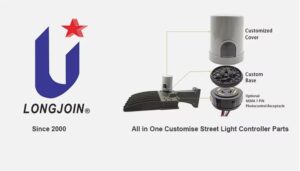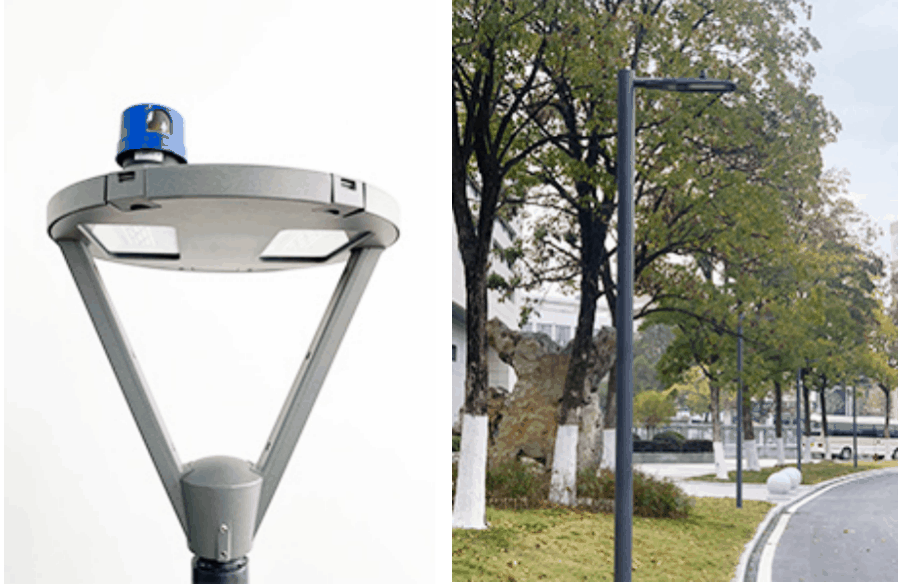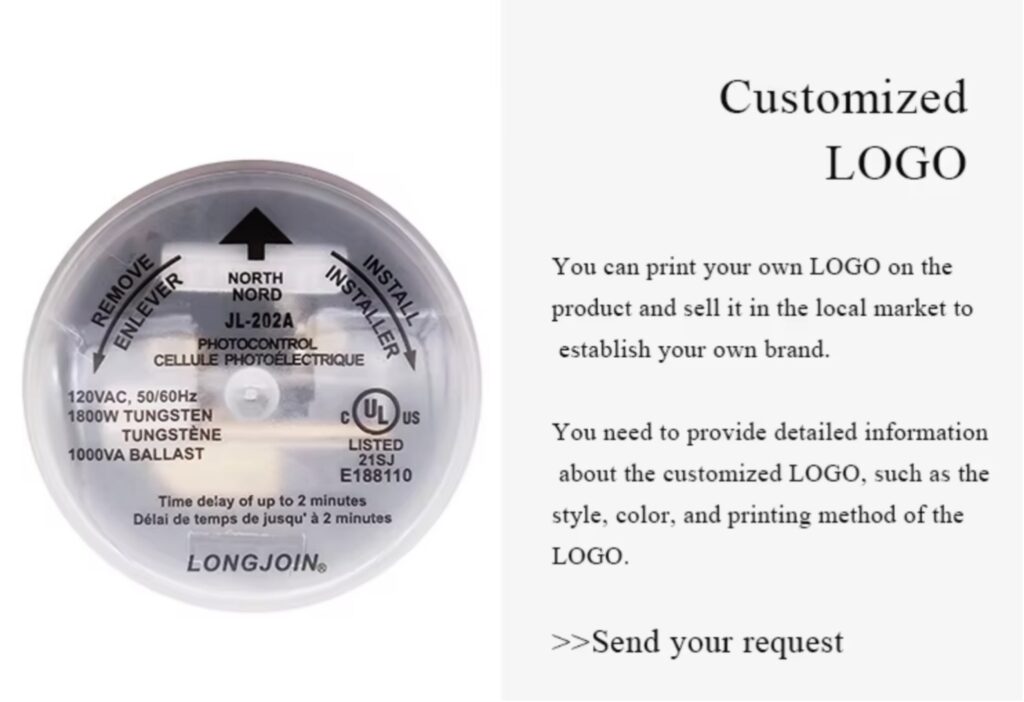Outline
- Introduction
- What Are NEMA Photosensors?
- What is Zhaga Photo Switch Sensor Series (Book 18 Standard)?
- What Are LongJoin Customized Photocontrol Solutions?
- How To Select a Light Sensor Based On Applications?
- Final Words

Choosing the right photocontrol receptacle for outdoor lighting can be confusing. With different types like NEMA, Zhaga, and custom models, it’s easy to get overwhelmed. Each type serves a different purpose—some are for simple on/off control, others support smart features or wireless systems.
That’s why Long-Join offers a full range of photocell sensors to suit every lighting need. This guide walks you through each product series and helps you pick the right one based on your specific application.
What Are NEMA Photosensors?
Key Features
Compliance with ANSI Standards
Long-Join’s NEMA light sensor switches adhere to ANSI C136.10 and C136.41 standards. This ensures their compatibility and reliability in roadway and area lighting applications.
Twist-Lock Design
The standardized plug-and-play design that allows the street light controllers to be easily attached or detached. Each device has locking tabs or pins that match with slots on the socket. You insert the sensor into the socket and give it a simple twist (usually clockwise) to lock it in place. This ultimately minimises maintenance time and effort.
Versatility
These products are suitable for both traditional and advanced lighting systems. This helps accommodate a range of control requirements from basic ON/OFF functions to smart city integrations.
NEMA Photocell Product Table
| Model | Pin Type | Functions | Key Features | Application Scenarios |
| JL-205C | 3-Pin | Basic ON/OFF | Instant-on, side sensor, 120–277V range | Standard streetlights, area lighting |
| JL-240XB | 5-Pin | Dimming + ON/OFF | ANSI C136.41 compliant, 0–480VAC range | Energy-saving LED systems |
| JL-240XA-14 | 7-Pin | Dimming + Smart Control | ANSI C136.41 compliant, gold-plated contacts | Smart city lighting |
How to Choose the Right NEMA Photoelectric Sensor?
3-Pin
This type is best for simple ON/OFF control. It’s used in low-budget projects where advanced functions aren’t needed. The 3-pin setup includes Line, Load, and Neutral. It detects ambient light and switches lights on or off. It works well in rural roads, parks, and basic street lighting.
5-Pin
This model supports dimming control. It adds two pins for a 0-10V dimming interface. That lets users lower brightness during low-traffic times. It’s a common street light controller to save energy. It balances efficiency and better lighting control.
7-Pin
This version is made for smart lighting systems. It adds two more pins for data and control signals. It supports protocols like DALI or wireless communication. Cities use it for real-time monitoring and adaptive lighting. It’s ideal for smart city upgrades and future-ready networks.
What is Zhaga Photo Switch Sensor Series (Book 18 Standard)?

Key Features
Zhaga LED street light photocell follow the Book 18 v2.0 standard. They are compact, low-profile, and made for modern LED luminaires. The tool-less interface allows quick and secure installation. No twisting or complex locking is needed. This makes them ideal for fixtures with limited space. They support basic ON/OFF control and 0–10V dimming.
Advanced versions also support wireless protocols like Bluetooth and Zigbee. That means better integration with smart city platforms. They are often used in areas where aesthetics and energy efficiency combined with connectivity are top priorities.
Zhaga Product Table
| Model | Pin Type | Functions | Key Features | Application Scenarios |
| JL-700 | 4-Pin | ON/OFF + Dimming | IP66 waterproof, compact design | LED streetlights, parks |
| JL-712B2A2 | 4-Pin | Wireless Smart Control | Bluetooth Mesh communication, APP control | Smart campuses, city lighting |
| JL-721A Series | 4-Pin | DALI 2.0 Control | Zhaga-D4i certified, plug-and-play interoperability | Modern LED smart lighting systems |
How to Choose the Right Zhaga Automatic Light Sensor?
JL-700
This is a practical choice for basic ON/OFF and dimming needs. It’s best used in standard LED streetlight installations or public park lighting. Its slim, plug-and-play design helps reduce installation time.
JL-712B2A2/JL-721A Series
If your project demands wireless communication, these products are more suitable. They are designed for smart environments like city streets, university campuses, or commercial complexes. With Zigbee or Bluetooth capabilities, it supports real-time control, remote updates, and advanced scheduling. Choose it when connectivity and remote access are a must.
What Are LongJoin Customized Photocontrol Solutions?

Key Features
Customized outdoor photocell light sensors are designed for unique, high-demand environments. These include high-voltage systems, storm-prone regions, or smart lighting networks. Unlike off-the-shelf models, they merge standard housing with application-specific functionality.
Long-Join offers full engineering support to match exact voltage ranges, communication protocols, and surge levels. These photocells are not just modified—they are purpose-built. That ensures better performance, higher protection, and system compatibility for specialized projects.
Customized Lighting Control Product Table
| Model | Type | Functions | Key Features | Application Scenarios |
| JL-423C-M | Surge Protected | ON/OFF + Surge | Enhanced surge immunity up to 460J/10kA | Lightning-prone areas |
| JL245CN | Wireless | Smart Control | NB-IoT compatible, Remote Control, Adaptive mode | Connected lighting networks |
How to Choose the Right Customized Photocell?
Choosing the right customized photosensor starts with the environment. For high-power areas like factories or highways, go with a high-voltage model. These can handle inputs up to 480V without failure.
If your installation site faces frequent lightning or voltage surges, choose a surge-protected photocell. It offers extra shielding against electrical spikes. This is critical in coastal or mountainous regions.
Need remote control or IoT compatibility? Then, wireless photocells are the answer. Look for models that support Zigbee, NB-IoT, or similar protocols. These work best in smart campuses or connected street systems.
How To Select a Light Sensor Based On Applications?
Quick Selection Chart
| Application Scenario | Recommended Photocell |
| Basic ON/OFF Lighting | NEMA 3-Pin |
| Energy-Efficient Dimming | NEMA 5-Pin / Zhaga 4-Pin |
| Remote Smart Control | NEMA 7-Pin |
| LED Smart Lighting | Zhaga 4-Pin |
| Special Environments | Customised Models |
Practical Tips for Decision-Making
1. Fixture Compatibility: NEMA vs Zhaga
Start with the socket type. If the fixture uses a twist-lock base, it’s NEMA. If it uses a low-profile port, it’s likely Zhaga. Don’t try to mix them—they’re mechanically and electrically different. Check the fixture spec sheet before selecting the photocell.
2. Control and Communication Needs
Need just ON/OFF control? A 3-pin will do. Want dimming? Go for 5-pin (NEMA) or 4-pin (Zhaga). For full remote access, only a 7-pin NEMA or wireless Zhaga will work. Match the photocell’s control capability with your lighting system’s intelligence level.
3. Voltage and Environmental Requirements
High-voltage areas need models like the LJ-HVPC. In surge-heavy regions, pick photocells with built-in protection like the LJ-SPPC. Outdoor lights exposed to storms or grid spikes must have this level of resilience. Always check site voltage and risk factors before finalising.
4. Future-Proofing and Scalability
If you plan to upgrade later, don’t get locked into a basic model. Go with 5-pin or 7-pin NEMA, or a 4-pin Zhaga with communication-ready options. These support expansion, like adding sensors or central control. Think ahead so your system doesn’t become outdated in two years.
Final Words
Longjoin offers a full range of photocells to meet diverse outdoor lighting needs. From basic control to smart city integration, there’s a solution for every project. For reliable sourcing and expert support, Chi-Swear is a trusted partner for Longjoin photocells.
External Links
- https://www.nema.org/
- https://www.zhagastandard.org/index.php?option=com_content&view=article&id=340:zhaga-enables-iot-upgradeable-outdoor-led-lighting-fixtures&catid=22
- https://www.ansi.org/
- https://en.wikipedia.org/wiki/0-10_V_lighting_control
- https://www.dali-alliance.org/
- https://en.wikipedia.org/wiki/Zigbee
- https://en.wikipedia.org/wiki/Narrowband_IoT






